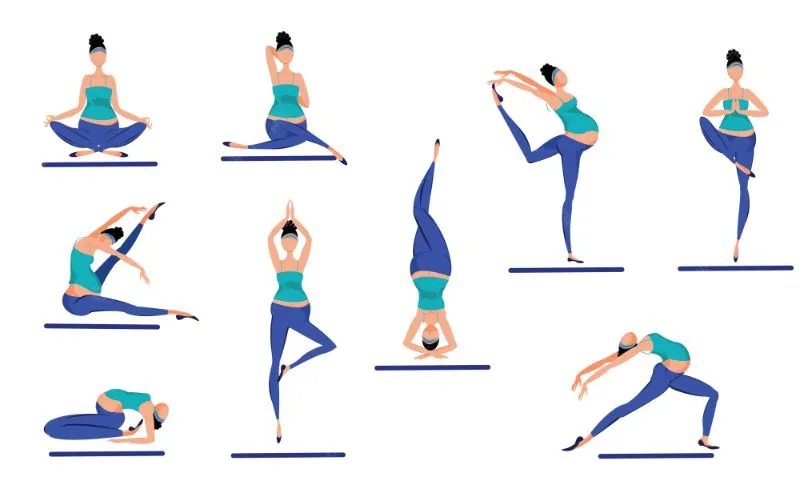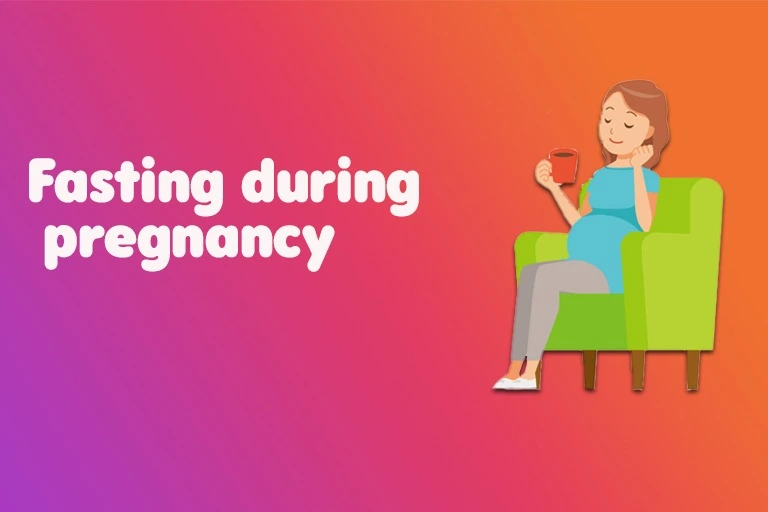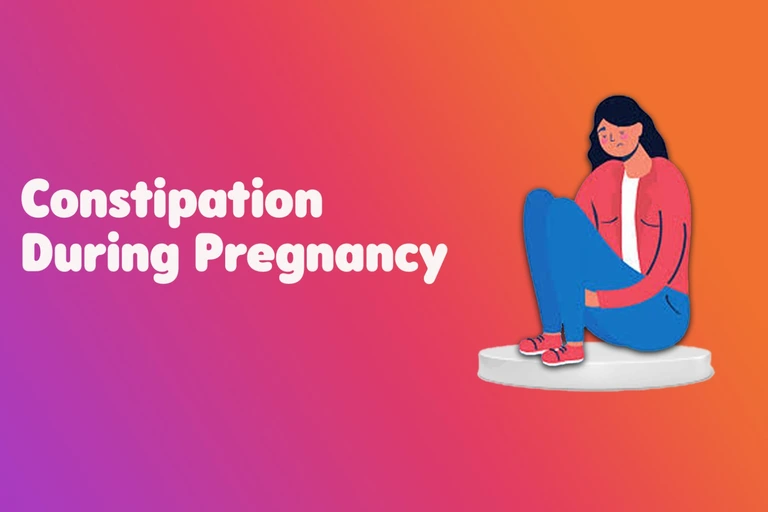Eight effective pregnancy stretches for expecting mothers.
You will find the eight best and most effective pregnancy stretches for expecting mothers to alleviate aches and pains. Ease back pain and stay active during pregnancy. Being pregnant is a beautiful journey that is full of hope and excitement.
It does, however, also provide a considerable number of physical difficulties. Pregnancy stretches are one practical technique to ease some of these difficulties. The most excellent pregnancy stretches, their advantages, and safe performance techniques are all covered in this book.
What Are Pregnancy Stretches?
Pregnancy stretches are stretches or stretching exercises specifically designed for pregnant women to help alleviate back pain and other aches and pains commonly experienced during pregnancy. These exercises focus on stretching the lower back, pelvis, pelvic muscles, and other areas that can be affected by the changes in a woman’s body during pregnancy.
During the second and third trimester of pregnancy, the hormone relaxin is released in a woman’s body, causing the ligaments to become more lax. This increased flexibility can lead to instability and discomfort in the joints, making stretches even more critical.
Some of the best pregnancy stretches include the pelvic tilt, cat-cow stretch, and seated forward bend. These stretches can help strengthen the muscles supporting the back and pelvis, improve flexibility, and relieve pain during pregnancy.
Benefits of Stretching During Pregnancy
It is a very beneficial stretch during pregnancy; here are numerous benefits as follows:
Reduces Back Pain
Pregnancy often causes lower back pain in women. As a result of their increased weight and altered posture. Stretches that release tense muscles enhance posture and fortify core muscles, better supporting the lower back and easing this discomfort.
Improves Flexibility
Pregnancy causes physical changes, so staying flexible is essential to prevent aches and pains. Stretching enhances the range of motion, prevents muscular tightness, and eases everyday pregnancy-related aches and pains like those in the legs, back, and hips.
Prepares for Labor
Stretching prepares and strengthens the muscles that will be used during labor. It strengthens the pelvic muscles, increases stamina, and includes breathing techniques that help reduce pain and anxiety during childbirth.
Enhances Blood Flow
Frequent stretching improves circulation, which is advantageous to both mother and child. As the body grows and evolves, improved blood flow helps with muscle mending and recovery, lowers swelling in the legs and feet, and increases energy levels.
8 Effective pregnancy stretches
Stretching can help your body prepare for childbirth, reduce discomfort, and increase flexibility during pregnancy. The following eight stretches are safe and advised for expectant mothers:
Cat-Cow Stretch
The Cat-Cow stretch is a mild technique for maintaining a flexible spine and releasing back stress. The cow stance, which calls for arching the back and looking up, and the cat pose, which calls for rounding the back and tucking the chin, alternate during this stretch.
Pregnant women can ease stiffness in their necks and backs, which are frequently subjected to additional tension because of the shifting posture during pregnancy, by carefully and gently executing these poses. A pregnant woman follow the pregnancy workout plan so that she will feel easy during her delivery.
Child’s Pose
A beneficial stretch for the thighs, hips, and lower back is the child’s pose. To perform this posture, kneel, Lean back on your heels and extend your arms in front of you, bringing your torso toward the floor. By maintaining this posture, you can gently release tension by allowing your hips to open and your spine to stretch.
Pregnant women who experience lower back pain and stiff hips are common problems as pregnancy goes on and will find significant relief from this stretch. In Child’s Pose, deep, calm breathing can be a peaceful way to decompress after a hectic day.
Seated Forward Bend
The seated forward bend effectively stretches the lower back and legs. You sit with your legs extended on the floor and bend your hips slightly forward so that your toes are within reach.
It is important to exercise caution when performing this stretch to prevent overstretching, particularly during pregnancy, when the hormone relaxin may increase joint flexibility. Pregnancy-related stiffness and discomfort can be lessened with regular practice of the Seated Forward Bend.
Butterfly Stretch
Opening the hips and extending the inner thighs are excellent uses for the butterfly stretch. A person adopts this stance by sitting on the floor, bringing their soles together, and bending their knees slightly toward the floor.
The weight of the developing baby can cause the hip area to become tense, which is why this stretch helps release it. This encourages inner thigh flexibility, facilitating easy mobility and preparing the body for birth. The Butterfly Stretch is a quick and easy pregnant exercise that helps keep your hips flexible.
Hip Flexor Stretch
The Hip Flexor Stretch assists with posture by focusing on the front of the hips. To execute this stretch, make a 90-degree angle with your other foot in front and kneel on one knee.
Hip flexor strains can be relieved by gently pulling the hips forward until a stretch is felt in the front of the hip. Pregnancy’s shifting center of gravity can cause hip flexor strains. This stretch lowers the risk of back pain by supporting the lower back and maintaining proper posture.
Pigeon Pose
The pigeon pose is a deep stretch for the hips, glutes, and lower back. Starting at a tabletop posture, one leg is brought forward and positioned behind the wrist while the other is extended back.
When the torso is lowered over the bent leg, a deep stretch in the hip and gluteal muscles is possible. As the body adjusts to the changes of pregnancy, this pose helps release tension and tightness in the lower body. Pigeon Pose can improve comfort and flexibility regularly, particularly in the hip area.
Side Lying Stretch
The hips and quadriceps are the main targets of the side-lying stretch. The person is on one side, with their upper leg bent and their upper hand holding their foot and gently dragging it towards their buttocks.
During pregnancy, the quadriceps and hips can become overworked; this stretch helps release some of that tension. Pregnant women can increase their general comfort and mobility by stretching for 30 seconds on each side, which will also help them become more flexible and release muscle tension.
Wall Calf Stretch
The Wall Calf Stretch works well for increasing flexibility and extending the calves. One foot is stepped back, keeping it straight, and the front knee is bent while facing the wall with hands pressed against it. To help stretch the calf muscles, press the rear heel toward the floor.
This pregnancy stretch is beneficial for preserving flexibility and avoiding leg cramps frequently occurring during pregnancy. Regularly performing the Wall Calf Stretch can keep your calf muscles flexible and less prone to pain.
Common Stretching Mistakes to Avoid
Stretching is essential throughout pregnancy to keep the body flexible, ease discomfort, and prepare for labor. To prevent harm, though, you must do it safely. Pregnancy stretches are very important for a pregnant women. Avoid the following typical stretching errors:
Overstretching
A lot of stretching might harm the body since it reaches its capacity. A hormone called relaxin, which pregnant women produce, loosens ligaments and, if overextended, can cause injury. Stretching should always be done to a comfortable length, and the muscles should never be pushed past their natural range of motion. Pay attention to your body, and stop when you sense a light tug, not pain.
Holding Your Breath
You are stretching and need breathing to be done. Breathing in and out too quickly might make your muscles more tense and less effective at stretching. Regular, deep breathing increases blood flow, facilitates muscle relaxation, and amplifies the effects of stretching. Establish the habit of inhaling deeply before starting a stretch and letting it out gently while maintaining the pose.
Ignoring Pain
Pain is your body’s way of alerting you when something is off. Stretching should never hurt. If you feel any pain, stop right away and evaluate your method. Stretching through discomfort can put you at risk for harm. If the discomfort continues, speak with your healthcare physician to make sure there are no underlying problems. Aim for a comfortable, moderate stretch every time, and steer clear of any uncomfortable motions. While ignoring pain during the pregnancy stretches, woman will feel herself comfortable.
FAQs
How to Perform a Safe Stretch Routine?
Always stretch to a comfortable point without straining your muscles, and remember to breathe deeply and frequently throughout each stretch to ensure your exercise is safe.
What should I avoid while stretching during pregnancy?
After the first trimester, avoid making motions that hurt or create discomfort, such as lying flat on your back.
Are there specific stretches for sciatica during pregnancy?
The pigeon pose and seated piriformis stretch can help alleviate sciatica pain.
Wrap up
For a pregnant woman, it is beneficial; stretches should be followed so that it will be effective both for the mother and baby. These pregnancy stretches are also effective for you after your child’s birth. The advantages of yoga for pregnant women are highlighted in the article as an extensive plan that combines relaxation and stretching, which can be especially helpful during pregnancy. Stretching after giving birth is also advised to promote flexibility. To assure safety and efficacy, pregnant women should speak with their healthcare practitioners before beginning any new fitness program.







